![]() Insect
Head Collage exemplars: Mid range
Insect
Head Collage exemplars: Mid range
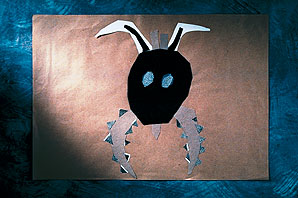 |
There is a rather lovely use of the textured pointy-shaped pieces, but they are placed onto a brown background sheet of similar colour. The absence of contrast between the pasting surface and the object itself means that the arms or mouth parts disappear into the background. The parts of the body with distinctive contrasts are up in the antennae area, and they compete strongly for the attention of the viewer. If this contrasting technique had been used with other parts we might have sensed more coherence in this image, but each part remains separate. There is a feeling in the cutting of curves that they are roughly faceted. There has been no attempt to cut careful curves. |
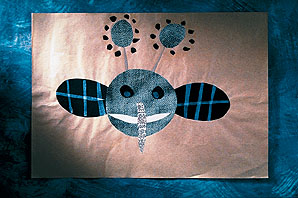 |
This image is highly individualised but possibly very cliched. It has a sort of "busy bee" feel about it. It has a circular head with two symmetrical radiating wings and two little sun-like antennae. It is something of a whimsical image; quite simple and reflecting an unsophisticated pictorial response. |
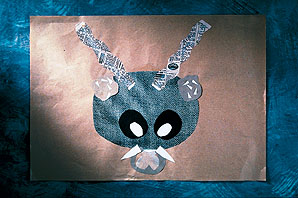 |
A symmetrical head form with mouth parts, eyes and antennae. Use has been made of all of the papers. The mouth parts lose their effect by being very pale in contrast with all other parts of the insect. When the different parts are added together there isn't a sense of a unified creature but rather one of separate bits which don't tie together particularly well. Compositionally there is such strict symmetry that it is hard to feel this as being alive, or expressive. Some of the forms themselves lack resolution. The blobby sorts of ears, with their sharp little particles seem to be randomly placed rather than tied together. In a compositional sense the details don't link with the whole. |
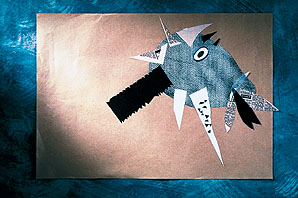 |
This is an inventive side view of an insect with some lovely dangling mouth parts and a notched, articulated neck. There are some spiny parts on the head. A different piece of paper tends to be used for every feature, thereby denying a sense of unity within the whole design. Some edges feel random. Leaving angular straight cut edges rather than shaping them to deliberately flow from one part of the insect into the other, suggests that the artist is thinking of each part separately. |
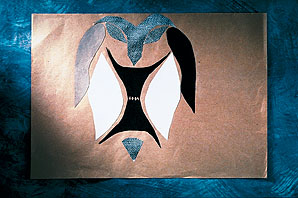 |
There are some very interesting shapes in this insect head, and it shows the potential to be a reasonably imaginative piece of work. What the image lacks is something holding it all together. With so much of the background colouration still remaining, the interior parts of the insect head dissolve on us, and we end up with three or four colours of paper that float in seemingly connected fashion but never quite resolve into a solid form. It is almost as if the student needed to use another overall colour underneath those forms and to treat them like a decorative surface on top of a whole head form. The strong curved nature is quite attractive. The shapes are carefully cut and rendered. There is quite a degree of skill in the cutting and shaping. |
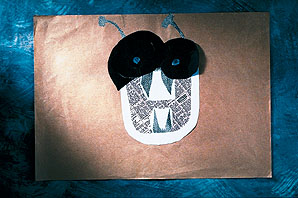 |
This is an example of a student making a clear, distinct form. There are two large spiral eyes but the cutting and construction techniques have not shown the spiralling to useful effect. The student has managed to obtain contrast by balancing darker, textured and plain papers. |